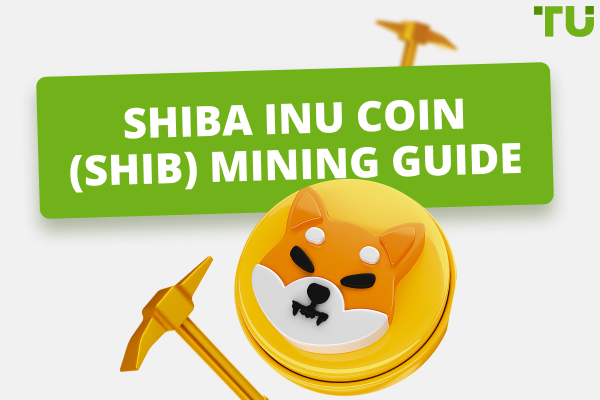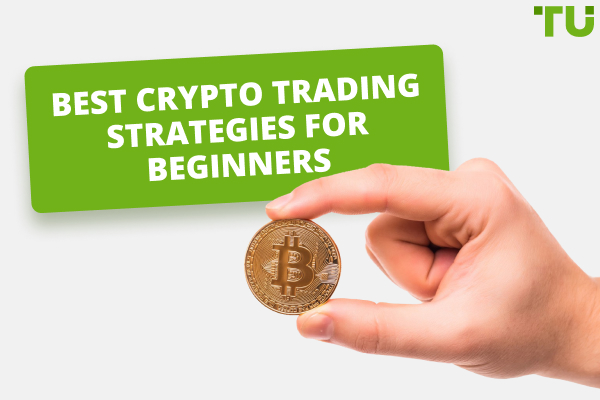Key facts about Bitcoin halving
Bitcoin (BTC) is the main driver of the cryptocurrency market, whose prices are followed by the rest of the сoins of the top 100 by market capitalization. Bitcoin halving is one of the fundamental factors that influence the coin’s cost. The next BTC halving is planned for the spring of 2024. From this review, you will find out about the influence of halving on BTC cost and the possibility to make money on it.
Start investing in crypto now with ByBit!What is Bitcoin halving?
Halving is the process of reducing the rate at which new cryptocurrency units are generated on the Proof-of-Work consensus algorithm, which takes place with fixed regularity inherent in the essence of the blockchain. From a miner’s point of view, halving is reducing the reward for each mined block by half. And with Bitcoins, in particular, it takes place automatically when the next 210,000 blocks are added to the blockchain, which happens on average once in 4 years.
There’s an opinion that Satoshi Nakamoto, who created Bitcoin, designed its limited emission and halving to maintain a constant interest in it. If mining a coin gets harder after each halving, then its value increases. The disputability of this idea is confirmed by the fact that on the Proof-of-Work consensus algorithm and other algorithms the coin emission takes place at full scale at the moment of network loading. And this has no impact on the value of the coin itself.
One of the advantages of halving is that the decrease in mining profitability “sifts out” obsolete ineffective farms, prompting miners to use more cost-efficient and productive equipment.
The next Bitcoin halving
The next Bitcoin halving will take place approximately in April-May of 2024 (the exact date is unknown, but it’s gradually moving to the beginning of May). After that, the rate of coin generation will decrease, which means the emission rate will decrease and the miners’ reward will drop by half. In total, there are 32 Bitcoin halvings planned. After they are performed, all 21 million coins will be mined.
All Bitcoin halving dates
As of the middle of 2023, since the main Bitcoin network was loaded, there have been 3 halvings. Below there is a table of their dates and rewards for each added block.
| Halving | Date | Calculation complexity | Number of added blocks | Reward (ВТС) | Price at the moment of halving, USD |
|---|---|---|---|---|---|
01.03.2009 |
1 |
0 |
50 |
- |
|
1 |
11.28.2012 |
3438909 |
210,000 |
25 |
12 |
2 |
07.09.2016 |
213398925331 |
420,000 |
12.5 |
651 |
3 |
05.11.2020 |
16104807485529 |
630,000 |
6.25 |
8,601 |
4 |
May 2024 |
- |
840,000 |
3.125 |
- |
5 |
May 2028 |
- |
950,000 |
1.5625 |
- |
According to this schedule of Bitcoin halving dates, the last reward halving will be in 2136, and in 2140 all BTCs provided by the emission will be mined.
Can halving dates change?
Halving dates depend on when the next 210,000 blocks will be mined, i.e., on calculation speed. Calculation speed changes, but on average stays at the same level. An increase in the hashrate (the capacity of mining equipment) due to the price increase is compensated by the added complexity of calculations. And vice versa, when the price and the hashrate drop, the complexity decreases. That’s why the halving schedule is relatively predictable, but shifts in the schedule by a few weeks are possible.
How does halving influence the Bitcoin price?
After the first Bitcoin halving, performed in November of 2012, the price increased by more than 200 times in 6 months. The next halving influenced the price less. After the miners’ reward dropped in 2016, the price of BTCs in the following 6 months increased by almost 2 times. After the third halving from May to November of 2020, the price increased by 1.56 times.
The influence of the past halvings on the BTC is explained by the following:
-
A considerable role of miners in the supply formed in the market. In 2012 and 2016, the BTC cost was significantly lower than in the years that followed. Many people couldn’t understand the cryptocurrency market, which is why there were relatively few players in it. Correspondingly, the calculation complexity, as well as the equipment cost, was relatively low. That’s why mining, which doesn’t require the knowledge of analysis, was a more attractive variant of moneymaking, compared to active trading.
-
A rise in the interest for cryptocurrencies as a result of the chain reaction. Halving led to a decrease in supply, the cost of BTC rose, and having seen the opportunities to make money on the price increase, new investors came to the market. The influx of new investors prompted a corresponding new rise in the prices, which made mining, in particular, even more lucrative.
-
A relatively low price of display cards for mining. Another factor, which in the past years maintained a low prime cost of mining, thus making it more attractive to new market participants.
Why is the influence of halving declining? The past halvings would cut the reward by half, thus indirectly influencing the drop in coins supply. But in 2012 the reward, in terms of quantity, was cut by 25 BTCs, whereas in 2020 it was only by 6.25 BTCs. Also, with each new halving and price advance, the number of active traders in the market would go up, and the share of miners would gradually go down. It explains the main reason why the role of halving in BTC pricing is gradually declining.
Will the price of Bitcoin rise after halving in 2025?
The next halving is expected to happen in 2024, as a result of which the reward for 1 block will decrease from the current 6.25 BTCs to 3.125 BTCs. It means the following: the miners’ reward, when they use the same equipment capacity, will drop by half. That, in turn, will lengthen the mining farms’ payoff period, which has already become longer because of the BTC price drop.
Proactive miners foresaw that and bought the equipment so that by the time halving is performed it would completely deplete its resources. After halving they will buy more powerful equipment and continue mining. But most miners will switch to other coins or completely refuse to mine BTC.
In theory, that could lead to the following:
-
Reducing the number of miners means slowing down the rates of new coin mining and reducing their supply in the market.
-
Reducing supply while keeping the same demand level will automatically push the price up.
The analysts at Arcane Research think that after halving in 2020, the miners’ role in the total sales amount declined rapidly, and they no longer influence the BTC price that significantly. According to their data, the average daily amount of the mined coins is 900 BTCs or 0.7% of the trading volume in the spot market. Before halving, the index was 1800 BTCs or 2%. It means that the reduction of the emission amounts can be easily compensated by either decrease in demand amid the market stagnation or by the cryptocurrency “whales”, capable of throwing a large amount of BTCs in the market to manipulate the price.
In other words, the mined amount of coins isn’t enough to shift the price significantly. Apart from that, most miners don’t rush to sell the coins at a price that is a third of the historical maximum of the coin expecting a rise. Therefore, it’s highly probable that the forthcoming halving will have almost no impact on the price, giving way to the stronger fundamental factors.
Where to buy Bitcoins?
Bitcoins can be bought through cryptocurrency wallets, DEX, and CEX exchanges. Cryptocurrency wallets are convenient if a long-term investment is planned. Their downside is that they support a limited number of coins. DEX exchanges don’t provide account registration, here one also needs a wallet. The best choice for active trading is CEX (centralized) exchanges.
ByBit
ByBit is a Singapore-based cryptocurrency derivatives exchange that allows traders to purchase contracts that let them purchase or sell crypto assets at certain prices in the future. This means that you can purchase or sell LINK on the ByBit platform at certain prices in the future.
Huobi Global
The exchange is among the top10 of the CoinMarketCap ranking, formed by such criteria as daily trading volume, references in the media, reviews, etc. Founded in 2013, it has regional representative offices all over the world.
The exchange’s advantages:
-
More than 500 trading assets.
-
-
A built-in-the-platform trading bot with adjustable parameters, and an analog of algorithmic trading.
-
Cryptocurrency trade on the P2P platform.
Buying BTCs from Huobi Global, long-term cryptocurrency holders pay one of the lowest fees.
Conclusion
For an investor, Bitcoin halving means decreasing mining’s profitability by half right away while using the same equipment capacity. Correspondingly, it means lengthening the equipment’s payoff period on average by the same 2 times, if you disregard an insignificant temporary rise in the BTC price. Considering that the price of 20,000 USD is close to the prime cost of coin mining, and the payoff period at this price, as of the beginning of July of 2023, is at least 1.5 years, after halving the situation for BTC miners will become even more complicated.
Alternatives for BTC mining:
Mining of less energy-consuming coins. So far, ETHs are among the most popular coins, but when the platform goes to ETH 2.0, miners will have to switch to other coins. For example, BCHs or ETCs.
Cloud mining. Here one should consider other coins as well. The advantage of cloud mining is that instead of buying the whole farm you lease part of its capacity. The downsides are the service fee, the risk of a decrease in the price, and, correspondingly, in mining profitability at a fixed lease rate.
Staking. Deposit analog. You block the coins in staking for a fixed term, and when it expires, you get the interest. The service is provided by cryptocurrency exchanges. The downsides are the losses when the coin price drops.
Stock trading. The best alternative for mining. You make money on any cryptocurrency, use leverage, open short positions on the price reduction, buy any coins irrespective of their consensus algorithm, and use the bought coins in game platforms of the GameFi sector. And most importantly, you can begin from any sum.
Good luck investing!
FAQs
What is BTC halving and how does it influence miners?
BTC halving is reducing miners’ profitability by 2 times, which was designed in the blockchain itself by the developers and takes place after every 210,000 blocks mined. It happens on average once in 4 years. For miners, it means that after each halving their income in the same time interval drops by 2 times, and the payoff respectively rises. After halving, some miners leave the market, switch to mining other coins, or buy equipment with a higher hashrate.
How will halving impact the BTC price?
After the past halvings, the BTC price would rise rapidly. But analysts agree that other factors had a greater influence on that, and the role of halving was insignificant. Analysts also point out a decline in the miners’ role in pricing. During halving in 2024, the price may rise considerably for a short period of time. But the price will be influenced by other, more significant fundamental factors.
Do other coins get halved?
They do, but not all. Halving is provided by the algorithm of cryptocurrencies, developed on the Proof-of-Work consensus algorithm. But they all have their own dates and quantity of the blocks mined before halving. For example, the next LTC halving will take place approximately in September of 2024, and BCH in April of 2024. But there are exceptions. For example, Ethereum, which is also built on the PoW algorithm, has no actual halving. But there is a periodic decrease in rewards, the future dates of which are unknown.
What should miners with small farms do after halving?
Miners have several options:
Calculate mining profitability and the payoff period on the calculator taking into account the reduced reward per block. Estimate the practicability of further mining. Consider selling the farm.
Continue mining provided that the equipment has already paid off and mining itself is profitable.
Switch to other coins mining on the Proof-of-Work algorithm. Preliminarily determine the profitability on the calculator.
Switch to other ways of money making: staking, lending on DeFi platforms, bi-currency investment, slot auctions.
Since mining is gradually losing its applicability due to the complication of calculations and the increasing cost of equipment, take a shot at active trading at cryptocurrency exchanges.
Glossary for novice traders
-
1
Cryptocurrency
Cryptocurrency is a type of digital or virtual currency that relies on cryptography for security. Unlike traditional currencies issued by governments (fiat currencies), cryptocurrencies operate on decentralized networks, typically based on blockchain technology.
-
2
Ethereum
Ethereum is a decentralized blockchain platform and cryptocurrency that was proposed by Vitalik Buterin in late 2013 and development began in early 2014. It was designed as a versatile platform for creating decentralized applications (DApps) and smart contracts.
-
3
Investor
An investor is an individual, who invests money in an asset with the expectation that its value would appreciate in the future. The asset can be anything, including a bond, debenture, mutual fund, equity, gold, silver, exchange-traded funds (ETFs), and real-estate property.
-
4
Index
Index in trading is the measure of the performance of a group of stocks, which can include the assets and securities in it.
-
5
Algorithmic trading
Algorithmic trading is an advanced method that relies on advanced coding and formulas based on a mathematical model. However, compared to traditional trading methods, the process differs by being automated.
Team that worked on the article
Oleg Tkachenko is an economic analyst and risk manager having more than 14 years of experience in working with systemically important banks, investment companies, and analytical platforms. He has been a Traders Union analyst since 2018. His primary specialties are analysis and prediction of price tendencies in the Forex, stock, commodity, and cryptocurrency markets, as well as the development of trading strategies and individual risk management systems. He also analyzes nonstandard investing markets and studies trading psychology.
Also, Oleg became a member of the National Union of Journalists of Ukraine (membership card No. 4575, international certificate UKR4494).
Olga Shendetskaya has been a part of the Traders Union team as an author, editor and proofreader since 2017. Since 2020, Shendetskaya has been the assistant chief editor of the website of Traders Union, an international association of traders. She has over 10 years of experience of working with economic and financial texts. In the period of 2017-2020, Olga has worked as a journalist and editor of laftNews news agency, economic and financial news sections. At the moment, Olga is a part of the team of top industry experts involved in creation of educational articles in finance and investment, overseeing their writing and publication on the Traders Union website.












